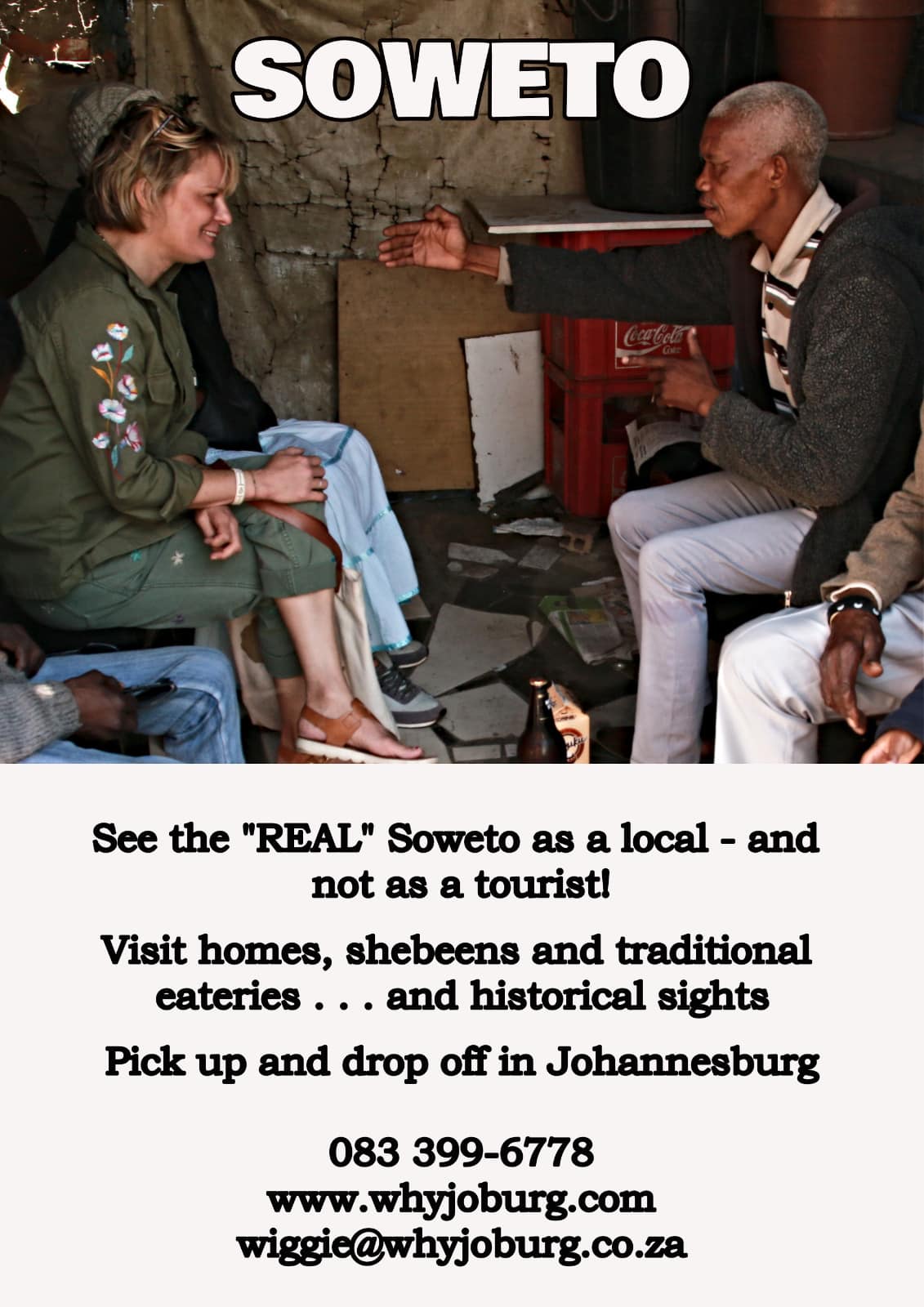Explore The Real Soweto

Soweto (SOuth WEstern TOwnships) is a very familiar name, but I would imagine most people’s knowledge about the Township, starts and ends with the riots of 1976, when thousands of school children voiced their objection to being treated as second class citizens.
I’ve helped tourists through the years plan their itineraries, and always suggested Township tours, but more often than not, felt a bit of apprehension on their side.
That’s all changed, and happily that dread is no longer.
Soweto is now Johannesburg’s #1 tourist attraction and South Africa’s most popular Township tour!

With some of the defining moments in the history of South Africa so intertwoven in its uneven streets, Soweto Township should be a compulsory stop for all foreigners – as well as locals!
The best way to experience this Township is to use a Soweto guide or take a Soweto tour, as getting around on your own in the organised chaos, can be quite confusing.

Below is a list of the sights, and sites, and the persons, and people, in Soweto!

Mandela Family Museum
The former home of Nelson Mandela, which should give an insight into his lifestyle before Robben Island, was re-developed at a cost of R9 million, and tragically lost all of its charm.
It retains the brick and mortar structure that Nelson Mandela moved into with his first wife, Evelyn Mase in 1946 – but unfortunately little else!

Hector Pieterson Museum
The Hector Pieterson Museum and Memorial is an incredibly powerful and thought provoking experience.
It almost comes across as an interpretive centre, as it explores a short series of local events, and relates to how they had far reaching effects on the country and its future.

Walter Sisulu Square of Dedication
The Walter Sisulu Square of Dedication is no longer the dusty square where the Freedom Charter, which is the basis for the country’s constitution, was adopted on the 26th June 1955.
The square was a vibrant community clothes market, before it had the same treatment as the “remodeling” of the Mandela House – and is now a featureless, paved wasteland.

Oppenheimer Tower and Credo Mutwa Village
The Oppenheimer Tower was constructed with blocks from Shantytown near Orlando, and was built to commemorate the slum removal scheme inspired by Sir Ernest Oppenheimer .
The Credo Mutwa Village, in the grounds of the Oppenheimer Tower, is an outdoor museum that displays traditional African art, culture and folklore.

Regina Mundi Church
I found the Regina Mundi Church, famous for the political “sermons” that were delivered at the height of the township’s resistance in the 70’s and 80’s, enthralling.
The bullet holes in the ceiling, the broken alter and the damaged figure of Christ all echo the absolute disregard, or possible desperation, of the police when they stormed the church on June 16th 1976.

Hastings Ndlovu Memorial Site
The Hastings Ndlovu Memorial Site, is on the old Orlando West bridge on Kumalo Main Road.
This site marks the spot where Hastings Ndlovo, 3 years older than Pieterson, was shot by police on 16th June 1976.
It was believed that he was the first child shot by police, but only died later in the day – after Pieterson, of his injuries.
Sadly, somewhat neglected and run down!

Orlando Towers
If you’re an adrenaline junkie, take a swing or bunjee jump – the first of its kind in the world, from one of the old Orlando Towers.
The Orlando Towers were originally built for the Orlando Power Station, which at the time was the most advance facility in the southern hemisphere.
Chaf Pozi, a restaurant/pub situated at the base of the Orlando Towers, is a very popular spot to eat and drink.

1976 Memorial Acre
The 1976 Memorial Acre, which houses the June 16th Memorial and Youth Institute, is situated opposite the Morris Isaacson High School and, for me, is one of the highlights of Soweto.
It is a museum that explains in detail – with a fantastic timeline, the happenings of the day of 16th June 1976.
A must visit!

Recent Comments